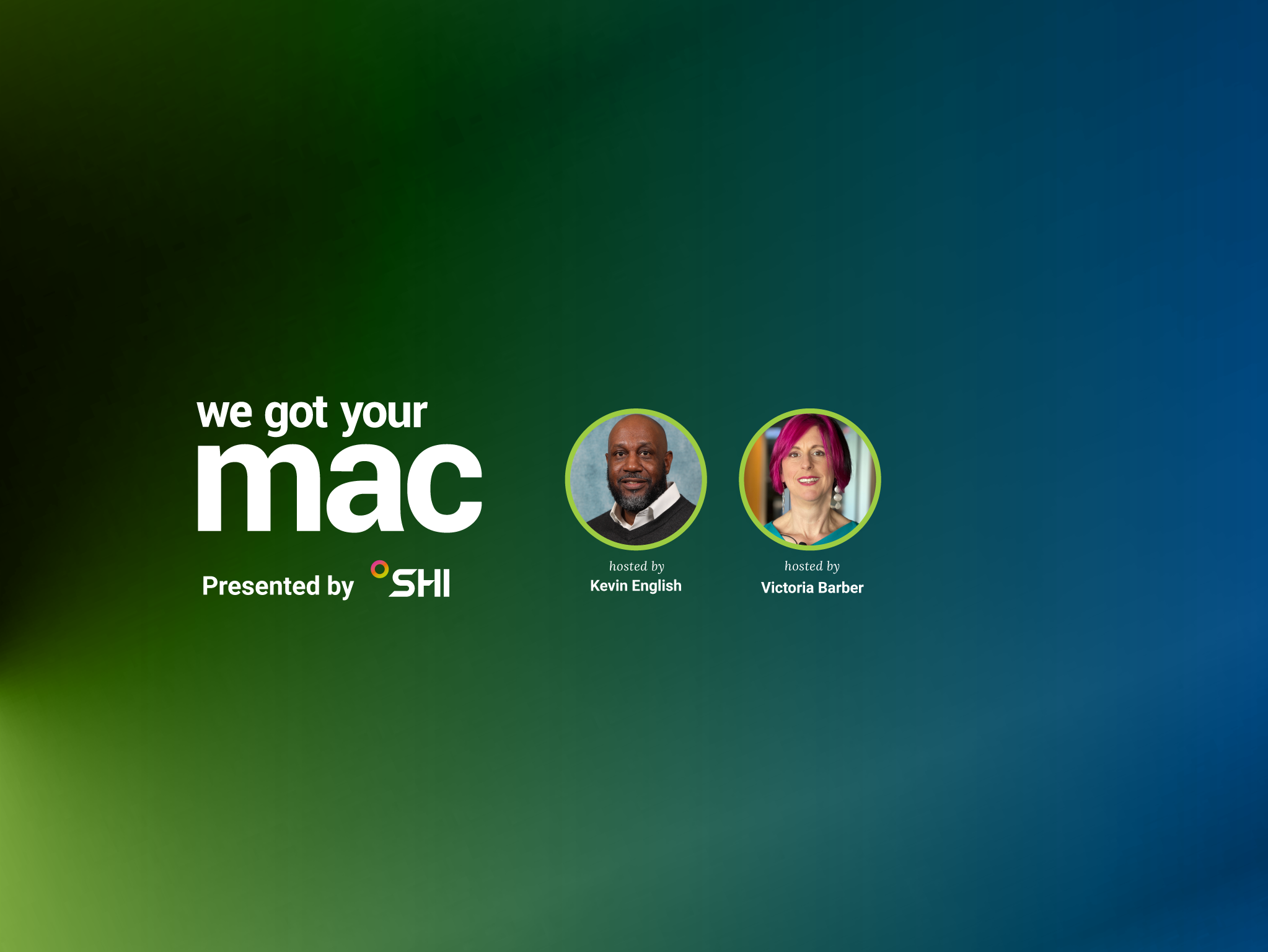Intune with the times: Navigating Mac and Windows management in a modern workplace
Just a few years ago, managing both Mac devices and Windows PCs within an organization presented quite the challenge. That was enough to put many IT teams off the idea of allowing Macs onto the network outside of specialized teams like creatives and designers.
This post contains content for We Got Your Mac podcast, presented by SHI.
But as Matt Carey and the WGYM team discuss on this week’s episode, times have changed, and tools are now available that make supporting both Macs and PCs with the same management platforms a reality.
Carey sits in SHI’s Modern Workplace Services group and runs the Multi-Vendor Platform Support team, a service that helps customers centralize support contracts for multiple software and hardware vendors into a single support contract.
Supporting end users in more than 40 countries around the world, he is not only seeing a steady increase in Mac devices on customers’ networks, but he’s also encouraging his team to use SHI’s employee choice program.
Cloud-first IT strategies and talent acquisition are driving Mac adoption
According to Carey, choosing between Mac and Windows often depends on personal preference. As a self-professed “Mac guy,” he notes that most of their support is still Microsoft-led in Windows. Still, Macs are growing in popularity, at least partly due to many organizations’ cloud-first IT strategies.
The same is true for his own team at SHI. Regarding operating in a cloud-based environment versus a traditional Windows environment, Carey reveals that his team took a cloud-first approach. They procured services aligned with the speed and scale they needed to deliver, making their entire organization globally remote. With a strong enough internet connection, they can do their jobs, freeing them from worrying about complex networks or accessing legacy Windows-based applications.
When asked about device management, Carey revealed that while they had used Jamf in the past, they are now using Intune. They made the transition as it made more sense to use Intune, with SHI being 100% Microsoft-centric in IT management tools. They use Apple Business Manager for provisioning, and the applications come through Intune.
The transition to Intune wasn’t without its challenges, but it worked quite well once the platform’s nuances were understood. Carey shares that he could even enroll 15 devices himself, highlighting the ease of the process.
Carey notes a generational divide when it comes to adopting the Mac platform. He often sees the C-suite and executive layers needing particular attention and guidance, mainly due to the differences in the user experience between Mac and Windows.
But, as he points out, the challenge simply emphasizes the adoption program’s communication and training portions (spoiler alert: more on this in Episode 8!).
New recruits like Mac – who knew?!
Interestingly, offering the choice between Mac and Windows devices has proven a successful recruiting tool, adding an unexpected benefit to the transition.
In conclusion, managing Mac devices and Windows PCs is possible with the right tools and strategies. By utilizing Microsoft Intune and taking a modern approach to business operations, organizations can effectively manage both devices while offering choice and flexibility to team members.


